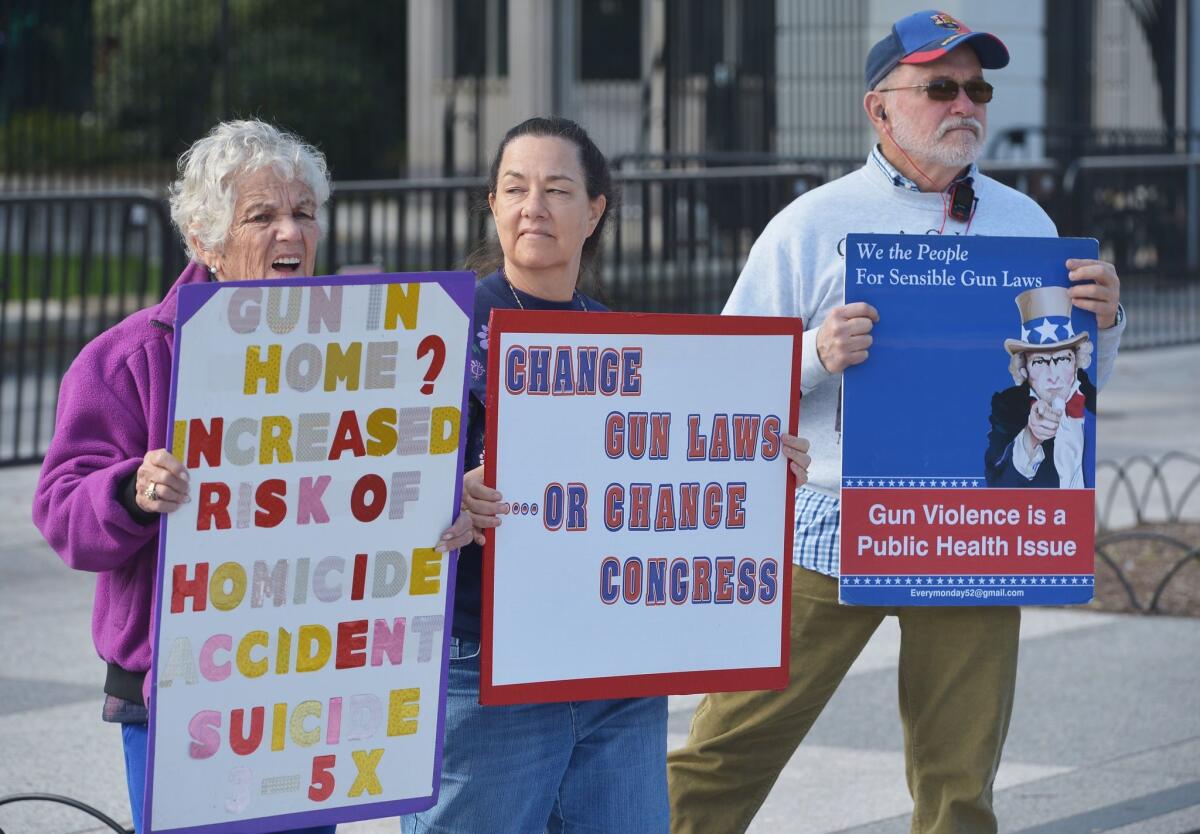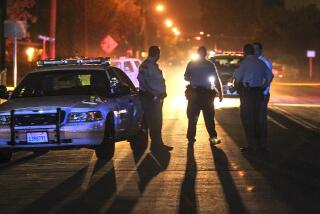Opinion: A public health approach reduced deaths from car crashes. It can do the same for gun violence

As trauma surgeons with more than 60 years of collective experience caring for victims of firearm violence, we have struggled as our patients — many of them children — died or were permanently disabled from preventable gun-related injuries. We have seen the agony in the eyes of their families. The U.S. is in the midst of the largest wave of mass firearm violence in modern history, yet polar political battles over “gun control” rage on, resulting in more division and no meaningful actions to reduce firearm injuries and deaths.
A solution to this impasse can be found in what some may view as an unlikely place: the public health approach to the prevention of death and disability from motor vehicle crashes.
Motor vehicle deaths have been on a steady decline using proven public health-based injury prevention strategies. As a society, we recognized the problem a half-century ago and committed to addressing it at the both federal and state levels.
We have made automobiles safer by developing air bags, anti-lock braking and enhanced vehicle stability, and establishing crash-test requirements. We have improved roadway design, such as breakaway light poles, barriers to reduce head-on crashes and absorb impact, improved lighting and signage. We have enacted state legislation requiring the use of safety devices such as seat belts and child safety seats, and enforced drunk driving laws and speed limits.
Public campaigns to change the culture of driver behavior have been instituted by Mothers Against Drunk Driving and through educational programs in high schools. Since the “friends don’t let friends drive drunk” campaign began in 1983, nearly 70% of Americans report they have tried to prevent someone from driving after drinking.
Since 1975, the number of people who died from motor vehicle crashes in the U.S., when adjusted for population growth, has fallen by 45%.
This reduction in automobile fatalities didn’t just happen. It required significant investment in research to develop the most effective interventions along with substantial effort by the medical and public health community to make sure patients understood how to keep their families safe on the road.
In 2017 — for the first time — deaths in the U.S. from firearms surpassed those from motor vehicle crashes.
If we mirror the public health approach to automobile safety, we can make similar progress in reducing firearm injury. It requires working together across political divisions to make firearm ownership as safe as possible, while also working to understand and address the root causes of violence.
About 60% of all gun deaths in the U.S. are suicides. The other reasons for firearm deaths are — in descending order — assault, unintentional injury (such as children with access to unsecured, loaded firearms) and mass violence with a firearm.
A public health approach to reducing firearm violence would recognize the need to develop interventions that address each form of violence and help reduce injury in at-risk groups.
In February, more than 45 of the largest medical, legal and injury-prevention organizations in the U.S. came together for an inaugural medical summit on firearm injury prevention. They reached a historic agreement to recognize firearm violence as a public health crisis in the U.S. and supported a comprehensive public health approach to solve it. The summit provided a road map of practical interventions to address the firearm injury crisis
From a policy perspective, such an approach would include requiring firearm safety training for all new gun owners and supporting safe storage of firearms to prevent access by an impulsive teenager in a temporary emotional crisis, a curious child or a thief. At-risk patients would be screened for suicide, intimate-partner violence or dementia, and extreme risk-protection orders would allow law enforcement to remove guns from those deemed an imminent threat to themselves or others. Universal background checks would be conducted for all firearm sales and transfers.
A public health approach also supports the development of innovative firearm technology that could prevent a weapon from being fired by a child or someone other than the owner. To address interpersonal violence, we need to reduce inequities in our vulnerable neighborhoods and regions, which means increasing access to education and decreasing unemployment, homelessness and poverty. Strategies would include support for hospital and community-based violence intervention programs.
Lastly, any successful effort requires working with firearm owners as a part of the solution rather than viewing them as part of the problem. Just as bicycle riders were engaged to help create an effective bicycle helmet campaign, firearm owners and vulnerable communities should be partners in developing solutions to the problem of preventable injury and death related to firearms.
Immediate steps can be taken toward a public health approach to the firearm crisis. We can change the conversation from a polarized debate about “gun control” to a common effort to address “firearm injury prevention.” We can approach firearm injury as a public health problem instead of a political problem. We can invest in research to better understand and more effectively address this epidemic of violence.
It will require substantial long-term investment in firearm injury prevention at the federal and state levels, but this investment will also bring long-term positive financial and societal returns. We can replicate the success we have had in reducing death and disability from motor vehicle collisions. A public health approach encourages us to move from debate to action, making society safer and stronger. And far less deadly.
Eileen M. Bulger is a professor of surgery at the University of Washington School of Medicine and chair of the American College of Surgeons Committee on Trauma. Ronald M. Stewart is chair of the Department of Surgery of UT Health in San Antonio, Texas, and medical director of trauma programs at the American College of Surgeons.
More to Read
A cure for the common opinion
Get thought-provoking perspectives with our weekly newsletter.
You may occasionally receive promotional content from the Los Angeles Times.






